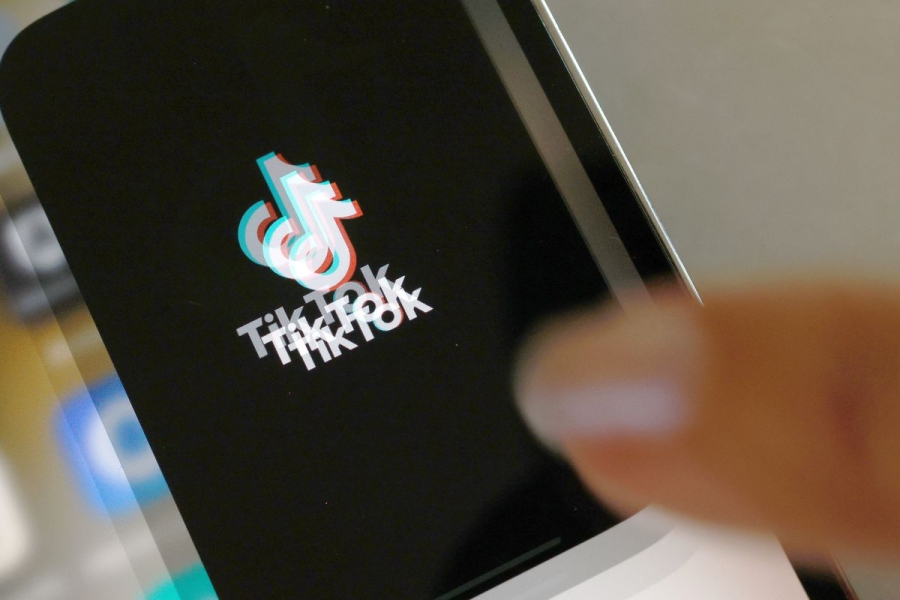The potential TikTok ban is now law. What happens next?

A.W. Ohlheiser is a senior technology reporter at Vox, writing about the impact of technology on humans and society. They have also covered online culture and misinformation at the Washington Post, Slate, and the Columbia Journalism Review, among other places. They have an MA in religious studies and journalism from NYU.
The bill to require TikTok to separate from its Chinese parent company or face a nationwide ban made it to President Joe Biden’s desk on Wednesday as part of a huge foreign aid package that passed through Congress this week. And Biden, as he previously promised, signed the bill into law.
ByteDance now has nine months to sell TikTok, a deadline that Biden can opt to extend once by 90 days. And while TikTok could avoid a ban with a successful sale or court challenge, the new law means Americans might want to start imagining an online world without TikTok.
The push to either ban TikTok or excise the platform from its owner has been around for years. For instance, then-President Trump announced plans to ban the app in the summer of 2020, although Trump now says he thinks banning TikTok is a bad idea and that people should be mad at Biden about it.
The threat of a TikTok ban has always been a little weird and complicated, drawing from a mixture of valid concerns and questionable moral panics about the ills of social media. As I’ve written previously, TikTok’s moderation failures and data privacy concerns are hardly unique, even as some lawmakers seem to persist in holding TikTok uniquely responsible for perpetuating them.
With that in mind, let’s break down the implications of this new law, why it’s happening, and what the internet would look like if TikTok disappeared.
What you need to know about the ban
Now that Biden has signed the bill into law, ByteDance has at least nine months — and possibly one year — to sell TikTok. It’s not clear, though, whether the law will survive a court challenge, which TikTok has already vowed to do.
The government is likely prepared for this, as the new law was the result of years of planning by lawmakers, triggering waves of opposition from TikTok executives and the app’s huge user base, which includes 170 million Americans, according to TikTok.
Congress made one earlier attempt to pass such a ban in March. That bill, which passed the House but didn’t make it through the Senate, gave ByteDance just six months to sell TikTok. The new version’s extended deadline may have helped sway some people in the Senate to vote for the bill. It certainly didn’t hurt that the TikTok ban was attached to a $95 billion aid deal that would provide support to Ukraine and Israel.
TikTok CEO Shou Chew said Wednesday that the app wasn’t “going anywhere” and that the company believes the courts will ultimately find the ban unconstitutional, violating the First Amendment. The US government would need to meet a high standard to prove that a ban is necessary to protect the nation’s security and privacy in order to prevail. Montana’s statewide ban of TikTok was blocked by a federal judge late last year as a likely violation of the First Amendment. The state is appealing that decision.
ByteDance could also, you know, sell. However, the Chinese government has previously said that it would oppose a forced sale of TikTok.
Why is this happening?
Great question!
The lawmakers leading the charge on this ban have cited national security concerns stemming from the app’s Chinese ownership. Specifically, they’ve mentioned the possibility of the Chinese government accessing the data of American users and using the app to spread propaganda or influence foreign elections. Members of Congress have referred to information they learned in security briefings about the potential for TikTok to harm American interests, but the contents of those briefings are not public.
Arguments in favor of banning TikTok note that the app’s Chinese ownership puts user data at risk of access by an unfriendly foreign government; critics note that the Chinese government could access a lot of the same data by simply buying it from a data broker.
There’s another driving force here, though. As we’ve previously noted, the current push for a ban in Congress gained a lot of attention after a viral but unfounded accusation spread that TikTok was brainwashing the youth of America with anti-Israel content in the first days of the Israel-Hamas war. That narrative seemed to rekindle a lot of fears about the power of TikTok to become a propaganda tool.
What changes if TikTok goes away in the US?
This isn’t the first time a major force in internet culture has faced extinction (RIP Vine). In fact, this churn is increasingly part of being online now. But TikTok, arguably, is the most influential online platform in the US, and it won’t be easily replaced. If TikTok goes away, other platforms will try to jump into the void it will leave.
As the Washington Post’s Will Oremus wrote, a TikTok ban would provide an open space for Meta and Google to move in. Meta has already adapted a lot of TikTok’s features via Reels, and Google’s YouTube has its Shorts video format, but neither quite has the cultural force behind them that TikTok has right now.
A lot of bigger creators — those with resources, managers, and huge followings — will be able to switch to another platform, if they haven’t already. Everyone else might see things shift more dramatically.
Earlier this year, Zari A. Taylor, a doctoral candidate at the University of North Carolina at Chapel Hill who studies media and culture, explained to me that the biggest loss to online culture if TikTok goes away will be in the uniqueness of how the platform promotes videos into user feeds. TikTok is good at recommending videos by accounts with small followings, whose makers are often not professional content creators. These creators “don’t have the audience that could help them evolve into other areas of the entertainment industry,” she said, and will likely lose their audience should the ban stand.
In some ways, the constant threat of a ban has already taken a toll on TikTok’s appeal for creators. After the first wave of TikTok ban threats back in 2020, I spoke with Ryan Beard, a creator who at the time had nearly 2 million TikTok followers. The threat of a ban from President Trump sent his livelihood into a spiral, and he accelerated his efforts to get views and followers on other apps. These days, he’s all but stopped posting on TikTok and has instead become a commentary YouTuber.
When TikTok rose in influence, it was better than any other app at showing users what they wanted to see, for better or for worse. Short, vertical-format videos might be available on any old platform these days, but the format doesn’t replicate what keeps people scrolling.
Some, like Beard, will turn their modest TikTok success into views on another platform. For many others, even the threat of the ban is a harsh reminder of the realities of making content on the internet: Your livelihood is tied to the success and attention of platforms you don’t control.
A version of this story was published in the Vox Technology newsletter. Sign up here so you don’t miss the next one!
Source: vox.com






